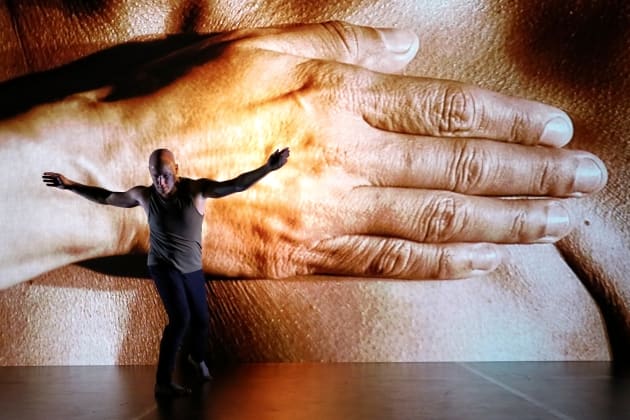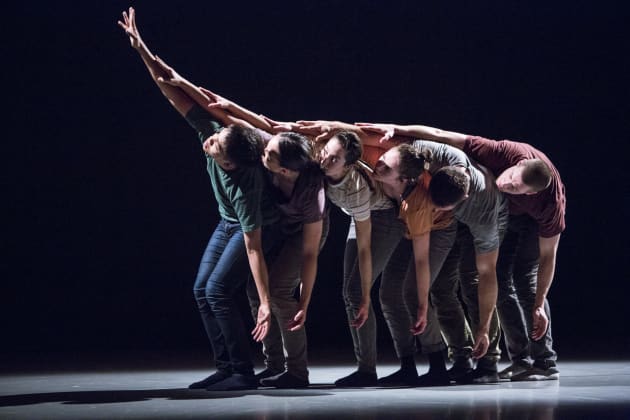Sydney Festival: Inheritor Album; Champions; Blood on the Dance Floor
Sydney Festival 2017
Company 605: Inheritor Album
Bay 20, Carriageworks, 16 January
Form Dance Projects: Champions
Bay 17, Carriageworks, 18 January
Ilbijerri Theatre Company & Jacob Boehme: Blood on the Dance Floor
Bay 20, Carriageworks, 22 January
The Sydney Festival program seems to get bigger and more diverse each year. Whether you think the primary purpose of an arts festival is to bring over the big name acts and productions from across the world; or to commission local artists to create new works and facilitate the touring of Australian made productions; the variety of shows presented in the 2017 Sydney Festival made one thing clear. Those works created and performed by Australian artists were up there with the best this festival had to offer. If cultural cringe is not dead yet - it should be.
Made with the assistance of FORM Dance Projects (based in Western Sydney), Champions is a clever piece of dance-theatre that takes its choreographic inspiration from football. Director Martin del Amo presents a ‘team’ of twelve female contemporary dancers on an AstroTurf field, and this work follows the structure of a football game (the warm-up followed by the onset of the game, a half-time break, then back on the field until the game is won, ending with victorious team celebrations). As commentator, Mel McLaughlin played a pivotal role in making this production as humorous and accessible as it was.
While much of the choreography is not particularly exciting to watch, the patient viewer is rewarded, often towards the end of a repetitive section, with a clear sense of the sporting moment or gesture it was intended to convey. Choreography and text is attributed to Martin del Amo in collaboration with the dancers, and what dancers they were. Standouts included Cloe Fournier, Marnie and Melanie Palomares, Kristina Chan, Sara Black and Katina Olsen. As the team’s Swan Mascot, Julie-Anne Long combined ballistic stretches, choreography from Swan Lake and chicken movements to great comic effect. Credit must also go to set/costume designer Clare Britton and composer Gail Priest as creating the ambience of an outdoor stadium in a theatre space is no small ask. Throughout Champions the commonalities and differences between professional football and contemporary dance were starkly revealed, from the shared physical toll versus the difference in status and respect they command from society at large.
Blood on the Dance Floor is another successful piece of Australian dance-theatre. It is produced in association with Ilbijerri Theatre Company and despite being much smaller in scale than Champions, writer and performer Jacob Boehme shares his story in a way that allows you to connect with his narrative on a personal level. While HIV/AIDS is no longer the death sentence it once was, Blood on the Dance Floor demonstrates the difficulties and the loneliness of living long-term with an incurable and infectious disease. From his opening appearance as a confidently camp gay man, Jacob Boehme gradually reveals the deeper layers of hurt and disappointment; there is honesty in his vulnerability, and that feels very genuine.
The sense of closeness between performer and audience is enhanced by the restricted use of space on a small raised platform that nestles in closely to the auditorium seats; and mirrored by the extreme close up face shots projected on the temporary wall behind him. Dance is just one element of this show, but Boehme executed Mariaa Randall’s choreography with confidence and ease. A highlight was the final dance in which he appeared to trace the veins of each arm with the index finger of the opposing hand.

Inheritor Album is a dance work for six dancers from Canada’s Company 605. It starts strongly and had some memorable sections but ultimately doesn’t live up to the ‘glorious athleticism’ described in the promotional material and conveyed by the accompanying images. Miwa Matreyek’s projected animations are a highlight and strongly enhance the overall effect of the choreographed movement with which they are teamed. Unfortunately the movement sections that don’t utilise moving animation appear relatively dull by contrast, the cast of six swamped by the vast floor space they have to fill and isolated by their distance from the audience.
One advantage the performance spaces at Carriageworks have over a traditional theatre is the way they can be set up differently to suit the needs of different productions and it’s interesting to note that in Bay 20, what seemed like too much floor space for six dancers in Inheritor Album was adapted just one week later to the small raised stage of Blood on the Dance Floor that provided such an intimate viewing experience.
- GERALDINE HIGGINSON




